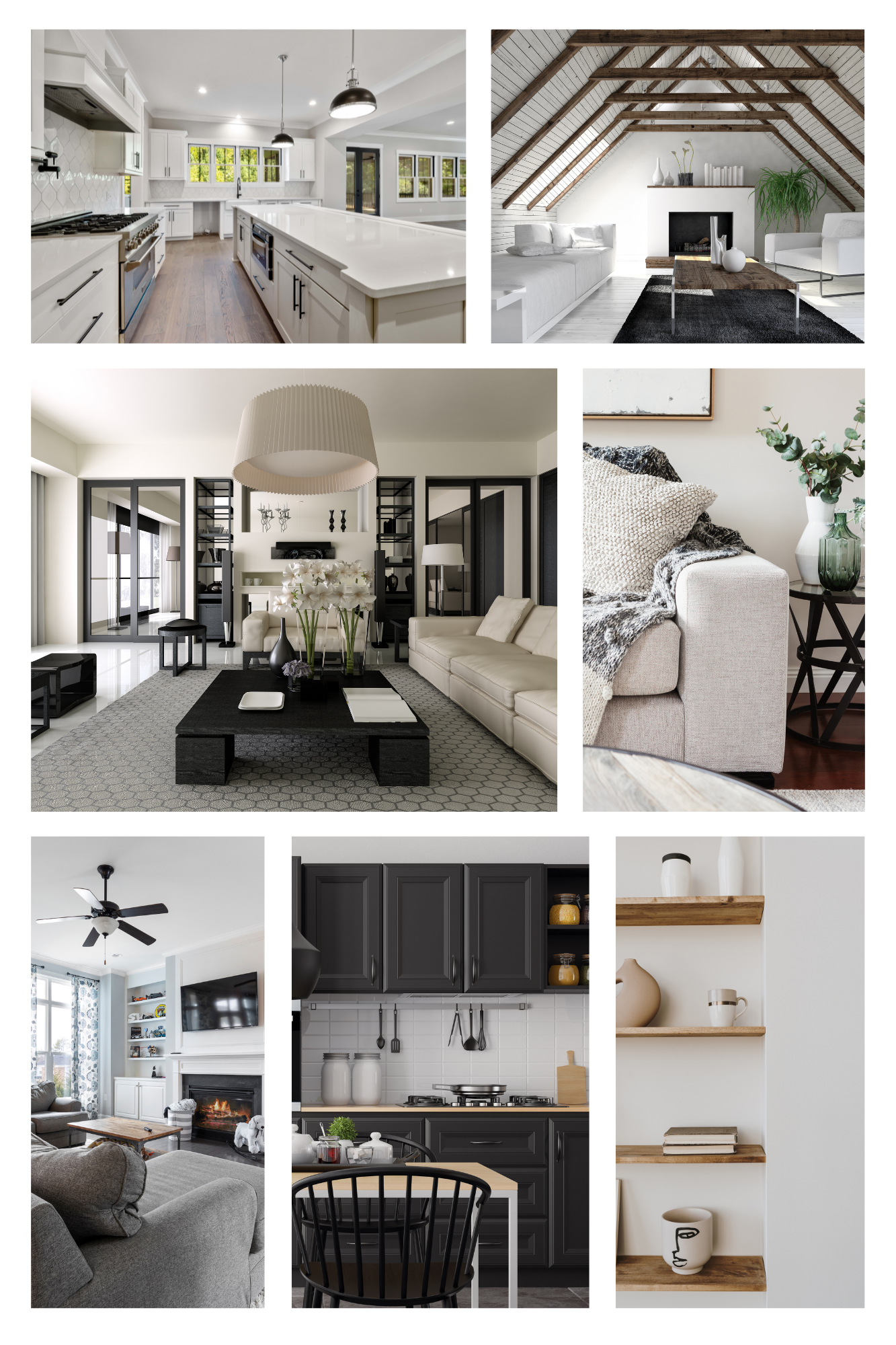Striking the Perfect Balance: Functionality and Aesthetics in Interior Design
When it comes to creating a home that truly embodies your family and serves everyone’s needs, finding the sweet spot between functionality and aesthetics is KEY. Interior design is not just about creating a visually pleasing space; it's about making sure that every element of your home contributes to your daily life in a meaningful way. If you’re ready, we’ll take a deep dive into the art of balancing functionality and aesthetics, sharing tips and tricks that will help you transform your home into your own harmonious haven.
Start with a Clear Vision:
Before starting any home project, it's crucial to have a clear vision of the atmosphere you want to create. Define your personal style including your family’s style as a whole… whether it's minimalist, traditional, modern, or eclectic – and determine the activities that will take place within the space. Does your family enjoy lounging on Saturday mornings? Will you need to share your entertainment space with teenagers? Having a well-defined vision will serve as your guide throughout the design process, helping you make informed decisions that align with both functionality and aesthetics.
Layout and Flow:
The layout of your space plays a pretty important role in its functionality. Consider the natural flow of movement and ensure that the arrangement of furniture allows for easy navigation. Thinking about those teenagers… is your home the hangout spot for all of the neighborhood kids? Do you entertain family a lot? Be sure to create designated areas for various activities while maintaining an open and uncluttered feel. For instance, in a living room, position seating areas around a central focal point, such as a fireplace or a large window, while leaving ample pathways for movement, especially when entertaining is a priority for you.
Multipurpose Furnishings:
Incorporating multipurpose furnishings is always a good idea to optimize functionality without compromising aesthetics. Think bookshelves, storage ottomans, and sleeper sofas. These pieces seamlessly blend into your design while serving multiple roles, making the most of your available space.
The Power of Storage:
Clutter ruins both the look and utility of your space. It's crucial to have enough storage options to keep things in order and looking good. Consider built-in shelves, hidden cabinets, and attractive baskets that go with your style. An organized space feels more pleasant and welcoming right away.
Lighting Brilliance:
Lighting can greatly affect how a room feels and works. Use different types of lighting like overhead lights, task lights, and accent lights. Put in dimmers so you can change how bright the lights are and make the room feel cozy. Pick light fixtures that both give enough light and look nice with your decor.
Color Palette Harmony:
Choosing the right colors can bring your design together, making it both functional and beautiful. Pick a palette that matches your style and creates a sense of harmony in the room. Remember that different colors can affect your mood – cool colors like blue and green can make you feel calm, while warm colors like yellow and orange can make the space feel lively and full of energy.
Furniture Selection:
When choosing furniture, focus on comfort, quality, and durability. Buy pieces that not only look good but also last a long time. Remember that comfort is important for practical use, and furniture that's ergonomically designed can make your living experience better.
Nature's Touch:
Adding nature-inspired elements to your design can make it look better and work better too. Indoor plants not only look nice, but they also help clean the air. Pick plants that grow well in your space and put them in pretty plant pots that go with your style.
Artful Displays:
Art and decorative items are great for adding personality to your space. Carefully chosen displays of artwork, photos, and collectibles can enhance the overall look while still being practical. You can create a gallery wall or arrange things on floating shelves to give your design a personal touch.
Personalized Comfort:
Make your home a reflection of your own lifestyle and needs by adding personalized elements that make it more functional, like a comfy reading corner with your favorite books, a dedicated working area for better productivity, or a relaxing spot for meditation. These special touches not only make your space look great but also improve your daily routine. Don't hesitate to showcase things that make you happy!
Texture and Layers:
Texture is an important part of design that can make your space look more sophisticated. Use different textures in your home, like soft pillows, cozy rugs, and curtains. Adding layers of texture makes your space more visually interesting and pleasing to touch.
Embrace Negative Space:
Design relies on the idea of negative space, which means purposely leaving some areas empty. By including negative space, you give your design space to breathe and let each element stand out. A clutter-free space improves functionality and creates a calm and visually appealing atmosphere
Achieving a well-designed space involves thinking about both usefulness and looks. It's important to have a clear idea of what you want, arrange things in a pleasing way, pick flexible furniture, and add personal touches. By doing this, you can make a living area that's visually appealing and enhances your everyday life. Remember, the real key is to combine style and practicality, creating a home that reflects your own taste and provides comfort and beauty.





